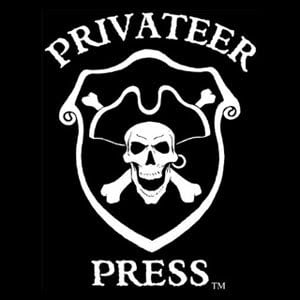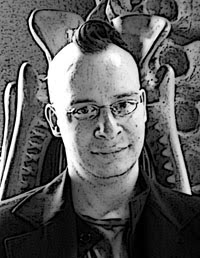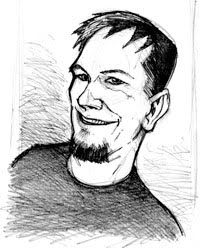INTERVIEW: Privateer Press Developer Q&A

Hi everybody, The fine folks at Privateer Press were so kind as to allow BoLS to interview a couple of members of the development team, the folks who put together Warmachine and Hordes. Lets dive in and see what makes the games tick.
Tell us briefly about what you do for Privateer Press.
JS – I am the lead developer for WARMACHINE and HORDES. It is my job to design new models and to develop rules for both game lines. I am also the continuity editor, which means I have to read every word we write about the Iron Kingdoms to make sure it maintains the feel and history of the setting.
In your words, what makes WM stand out from the crowd and why?
JS – We take great pains to create worlds that live and breathe. Our games tell stories and are set within worlds, that while fantastic, make sense and maintain an internal consistency that a player can become immersed in. I do not believe it is enough to have great looking art and models, or even to have the tightest rules in the industry – which I believe we have on all three counts – we also strive to maintain a depth of storytelling that can draw players in and hold their attention for years to come.
DC – I think there are a lot of standout elements of WARMACHINE, and the parts that players latch onto are as diverse as the players themselves. Some like the setting, the fiction, the artwork, or the models. The part that’s always grabbed me is the rules – WARMACHINE rules have a lot of tactical depth to them and are really evocative of who the model represents in the setting.
BoLS has many readers who have never played WM before. What advice would you give to them for how to start out?
Mk2 has just launched for both WM and Hordes. Where would you like to see the game(s) go from here?
JS– I think the rerelease of these games gives us the opportunity to reach more players than ever before. Especially since all current WARMACHINE factions have been fully updated for the new system, meaning all players can start off on an equal footing right away. So setting my sites low, I would love to see WARMACHINE become the national pastime…!
What do you feel is the single best change in the rules from Mk1 to Mk2 and why is it so critical?
JS -That is a really tough one… Ultimately I think it was the opportunity to streamline, refine, and rebalance the game. WARMACHINE and HORDES have always been labors of love, but Mk II gave us the chance to reexamine seven years of development and smooth out every rough edge, to make sure every model has a place. That is not only gratifying, but also invaluable in creating a solid foundation to build upon for years to come.
What are the typical gameplay attributes you want WM to reward in players?
DC – Well, seeing how things fit together is a big one. A great WARMACHINE army isn’t one that happens to have particular models in it. A great WARMACHINE army is one where all of the pieces come together well, where various spells and abilities play off of one another to make the army really hum. Other attributes like having a good eye for model positions on the gaming table and understanding the strengths and weaknesses of different parts of the armies (yours and your opponent’s) also make successful players.
Do you design factions to be perfectly balanced for all players, or are some designed for players of different experience levels?
JS -Balance is a strange word… Every model must be balanced. That said, we strive to create interesting and compelling, yet simple rules for our models. The key is to make them as user friendly as possible while building in a depth of play that enable the models to hold the attention of players game after game. Some of our models are certainly more complex than others… Both with regards to their rules and to the modeling and painting required to pull them together. That is one of my favorite aspects of the hobby, we can create products that appeal to players on many levels… And challenge their skills at the same time. Of course when it comes to WARMACHINE and HORDES, even simple models can have powerful rippling effects that cause older models to seen in new light.
What is your number one design philosophy/goal when creating a new model and its rules?
JS– Our number one philosophy for game design, whether its a model or an entire rules system, is to put ourselves in our players’ shoes. We question everything we do through the eyes of our players because if they’re not happy with what we produce, then we won’t be in business very long.
How do know when a new model’s rules are finished?
DC – I think that when a model is fun to play with, fun to play against, good enough to play, but not so good that you won’t play without it, it’s hit that perfect balance and is ready to go.
Do you envision expanding the game with new factions, or by advancing the existing world’s story and timeline?
JS -The Iron Kingdom’s setting is constantly expanding and changing. As I mentioned above, we tell a story with our games so the timeline will definitely continue to progress. That said, we will certainly be adding new characters and factions to the games over time.
And finally, metal or plastic?
DC – I like both just fine. They each have their pros and cons.
JS -I like the feel of metal… But the scale of the new plastic warjacks is very compelling.




